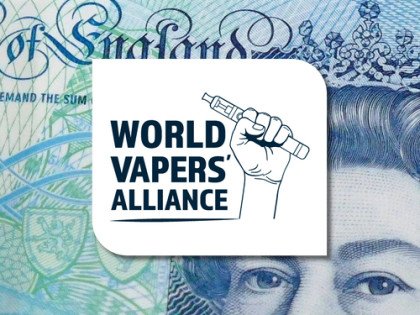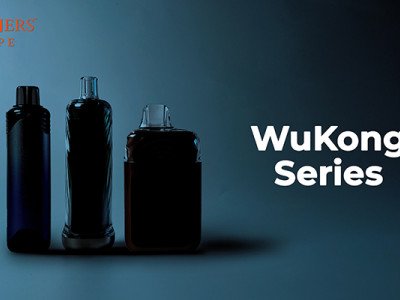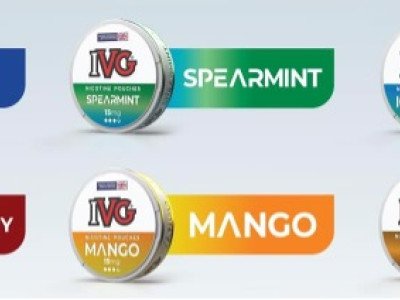“Anime, or Japanese animation which combines graphic art, characterisation and cinematography, is experiencing a global boom after having doubled its market size over the past decade. The industry was valued at $23.5 billion in 2020 and is continuing to grow rapidly. Anime is popular among adolescents and young adults, who are targeted with content related to romantic attraction, teen relationships, depression and despair,” Dr Wipfli and her team say.
Their take on anime is somewhat skewed, typical of those unfamiliar with the genre. They see cartoon and automatically assume it is for children – in the same way anti-vape activists complain about sweet flavours and bright coloured packaging.
“Just because it’s animated doesn’t mean it’s for kids,” says The Bark Blog in an article explaining what anime is for parents and families. “In Japan, though, animated shows are made for people of all ages, and it's commonplace for people in their 40s, 50s, and beyond to have favourite anime characters and shows. But even though the content is animated, anime can have very adult themes, ranging from serious drama all the way to pornography.”
The research team points out that a 2020 survey showed twice as many 18-year-olds to 29-year-olds had a very favourable impression of anime as compared with 30-year-olds to 44-year-olds.
They also appreciate that, “smoking by anime characters is not uncommon. Popular examples of anime smokers include Asuma Sarutobi from Naruto, Spike Spiegel from Cowboy Bebop and Sanjo from One Piece.”
But what about the children?
Wipfli’s team reckon anime has a growing popularity among teens worldwide. They also believe that the tobacco industry not only owns all vape products but also markets them to teens through anime shows.
In order to prove their hypothesis, they used the most scientific of methods – a search on Duckduckgo.com.
“We found numerous examples of strategies previously found to be effective in promoting tobacco use among adolescents and young adults, including linking products and behaviour to popular movies and video games; using cartoon-based marketing; and leveraging social media to market to youth. We identified manufacturers branding their products after anime shows and characters; for example Yami Vapour is named after the character Yami in the show To Love-Ru, now steaming on Hulu. We also found nicotine liquid named and marketed after popular anime shows and characters, including Taruto from Magical Meow Meow Taruto, Yamato from Space Battleship Yamato and Onoki from Naruto. Anime-inspired artwork was also observed on product packaging from vendors or on separately purchased accessories such as skins/wallpapers for e-cigarette devices. There are also examples of anime art depicting young girls and boys vaping that are shared over multiple websites and social media platforms including Instagram, Reddit and Twitter and linked through hashtags (eg, #animevape; #japanesevapor).”
They provide no evidence that these products are owned by tobacco companies or that the shows are aimed at children. Instead, they rely on their ignorance-based preconceptions to say the use of labelling “reflects youth and young adult-associated entertainment”.
In doing so, they use their unevidenced statements to call for stricter regulation, saying vaping in anime “may encourage uptake among adolescents and young adults”.
“The opening credits of Netflix’s recent live action rendition of the award-winning anime show, Cowboy Bebop, begin with an animated smoking character evolving into a real man smoking on screen. It is exactly this transformation from cartoon to real life that we need to prevent among youth anime viewers for both combustible tobacco and e-cigarette products.”
Ifs, buts, coulds – no evidence, no facts. This is simply another uneducated, opinionated attack on vaping. Moreover, not one mention of the reduced harm potential of vaping or the plummeting smoking rates in Japan due to the adoption of reduced harm products.
Dave Cross
Journalist at POTVDave is a freelance writer; with articles on music, motorbikes, football, pop-science, vaping and tobacco harm reduction in Sounds, Melody Maker, UBG, AWoL, Bike, When Saturday Comes, Vape News Magazine, and syndicated across the Johnston Press group. He was published in an anthology of “Greatest Football Writing”, but still believes this was a mistake. Dave contributes sketches to comedy shows and used to co-host a radio sketch show. He’s worked with numerous start-ups to develop content for their websites.
Join the discussion
Harm Reduction For The Rich
The United Kingdom risks becoming a harm reduction country only for the wealthy, according to Michael Landl of the World Vapers’ Alliance
CAPHRA Highlights Tobacco Control Flaws
The Coalition of Asia Pacific Tobacco Harm Reduction Advocates highlights the flaws in tobacco control which has led to the rise of black market in Australia
A Missed Opportunity at COP10
The Smoke Free Sweden movement says that COP10 was a missed opportunity to save millions of lives
COP10: Promote Tobacco Harm Reduction
Experts with Smoke Free Sweden are emphasising the urgent need for a Tobacco Harm Reduction approach at COP10






-listing400.jpg)




